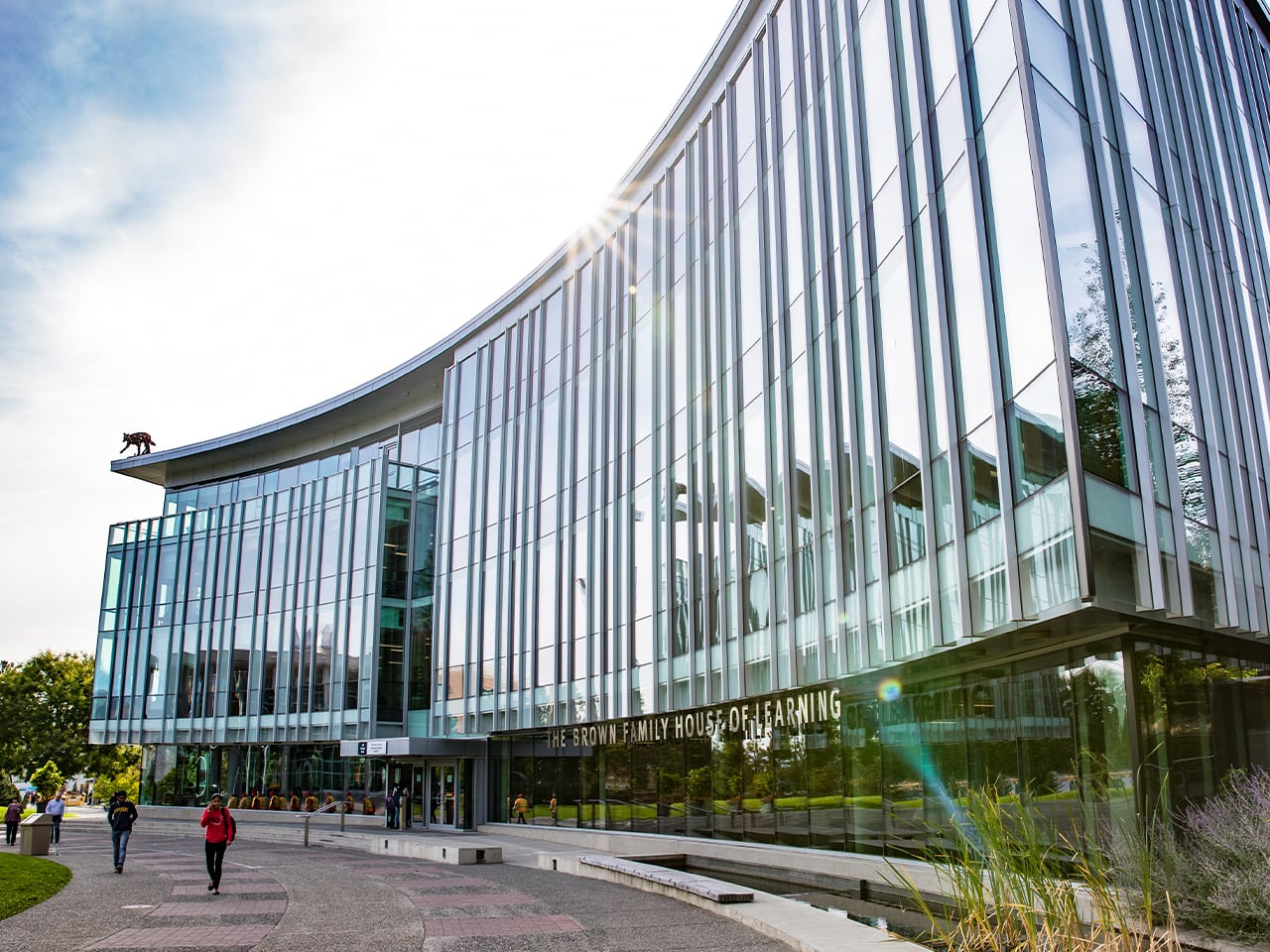Go directly into the business world with high demand skills, or prepare yourself for graduate studies in economics or finance.
Are you interested in the math that underpins our economies? Are you fascinated by the sophisticated mathematical models that predict economic behaviour?
If you’re interested in the interactions between mathematics and economics, this in-depth major will support you in developing a wide variety of skills and abilities related to your chosen field within the intersection of these two disciplines.
Critically explore economic issues using quantitative techniques, analysis of domestic and international socio-economic problems, develop applied research skills, and decision-making skills. Like the Mathematics Major, the combined Mathematics and Economics Major has both BA and BSc options tailored to your interests.
Why pursue a Bachelor of Arts, Mathematics and Economics Major?
Upon completion of this program, you will be able to:
- Analyze domestic and international socioeconomic and business problems.
- Collect, analyze, and interpret relevant economic information from multiple sources.
- Demonstrate how quantitative/statistical methods and software packages can be used to examine economic data.
- Apply research as well as decision making skills to solve real world economic and business related problems.
Future proof
You will cultivate the skills that employers are looking for in decision-making, critical thinking, problem-solving, self-learning, communication, working with groups, leadership, global competency, ethics and the ability to apply knowledge in real-world settings.
Experiential learning
And because employers want entry-level candidates with some work experience, you have opportunities in undergraduate research, co-op work placements, practicums, field schools, service learning and study abroad.
Expansive choice
You can explore calculus, differential equations, probability, computer programming, algebra, statistics, discrete mathematics, applied regression analysis, microeconomics and macroeconomics all within one program.
Collaborative faculty
Your lecturers approach teaching with compassion for their students and truly foster a productive learning environment. Enjoy class with enthusiastic professors, and active listening in small class settings.

What will I learn?
Study differential calculus for functions of one variable, with applications emphasizing the physical sciences, including: Calculation and interpretation of limits and derivatives; curve sketching; optimization and related-rate problems; l'Hospital's rule; linear approximation and Newton's method, Riemann sums, definite and indefinite integrals, techniques of integration, improper integrals, applications of integration, separable differential equations and series.
Examine the interactions between individuals and firms in various types of markets.
Explore the definition of economics; demand and supply analysis; consumer theory; production and cost; market structure including perfect competition, monopoly, monopolistic competition, and oligopoly; market efficiency and market failure; resource markets; and international trade.
Consider economic behaviour at the aggregate level, and the measurement and determination of national income. Measure macroeconomic variables including gross domestic product, unemployment, and inflation; the Keynesian model; aggregate demand and supply; money and banking; the money market; fiscal policy; monetary policy and the central bank; exchange rates and the balance of payments; and economic growth.
Learn to both calculate and interpret quantities relating to descriptive statistics; correlation; regression; probability; and probability distributions including the binomial and normal. Study different facets of sampling and experimental design and the construction and appropriate inference from confidence intervals and hypothesis tests including analysis of variance.
Explore the mathematical methods and tools most commonly used in analyzing economic problems. Topics include a review of set theory, functions, and limits; linear models and matrix algebra; application of single and multivariable calculus; unconstrained and constrained optimization; integration and difference and differential equations; application of dynamic analysis; and linear and non-linear programing.
-
100% of graduates said that said the quality of instruction was very good or good
-
91% of employed graduate respondents were working in a job related to their program
-
100% said the knowledge and skills gained were useful in performing their job
-
100% said they developed the skills to be able to speak effectively, analyse and think critically during their studies
How the program works
Lower level requirements (36 credits)
- MATH 1140 Calculus 1 (3)
- MATH 1240 Calculus 2 (3)
- MATH 1700 Discrete Mathematics 1 (Inactive) (3)
- ECON 1900 Principles of Microeconomics (3)
- ECON 1950 Principles of Macroeconomics (3)
- STAT 2000 Probability and Statistics (3)
- ECON 2320 Economic and Business Statistics 1 (3)
- MATH 2110 Calculus 3 (3)
- MATH 2120 Linear Algebra 1 (Inactive) (3)
- MATH 2240 Differential Equations (3)
- MATH 2700 Discrete Mathematics 2 (Inactive) (3)
- ECON 2900 Intermediate Microeconomics 1 (3)
- ECON 2950 Intermediate Macroeconomics 1 (3)
Third and fourth year ECON/BUEC course requirements (15 credits)
- ECON 3200 Introduction to Mathematical Economics (3)
- ECON 3900 Intermediate Microeconomics 2 (3)
- ECON 3950 Intermediate Macroeconomics 2 (3)
- ECON 4320 Econometrics (3)
- ECON 4330 Forecasting in Business and Economics (3)
Streams
Depending on a student's interests and qualifications, one of the following streams must be chosen:
Third and fourth year courses for the mathematics stream (15 credits)
- STAT 3060 Applied Regression Analysis (3)
- MATH 3160 Differential Equations 2 (3)
- MATH 3400 Intro to Linear Programming (3)
- MATH 4410 Modelling of Discrete Optimization Problems (3)
- One upper level Math Elective (3)
Third and fourth year courses for the statistics stream (15 credits)
- MATH 3020 Introduction to Probability (3)
- STAT 3060 Applied Regression Analysis (3)
Choose three of the following courses: (0)
- MATH 3030 Introduction to Stochastic Processes (3)
- Any two upper level STAT elective (6)
Note: Students who choose not to take MATH 3030 must take 9 credits of upper level STAT electives (0)
General stream (15 credits)
- STAT 3060 Applied Regression Analysis (3)
Choose four of the following courses:
- MATH 3020 Introduction to Probability (3)
- MATH 3030 Introduction to Stochastic Processes (3)
- STAT 3050 Introduction to Statistical Inference (3)
- MATH 3160 Differential Equations 2 (3)
- MATH 3400 Intro to Linear Programming (3)
- STAT 4040 Analysis of Variance (3)
- MATH 4410 Modelling of Discrete Optimization Problems (3)
- Any upper level MATH/STAT Elective (3)
If you don’t meet the requirements
You can take upgrading courses at TRU to help you meet the requirements of this program.
» Talk to a student recruiter about your options. You may be eligible for free tuition. Or learn more about upgrading.
Admission requirements
- Grade 12 (or equivalent) or mature student status
- English Studies 12/English First Peoples 12 with a minimum of 73% (or equivalent)
Admission to each major program may have specific requirements.
Recommended: Foundations of Mathematics 11 or higher is strongly recommended for students pursuing Education or a major in Geography and Environmental Studies, Sociology or Psychology
Career Options / Laddering options
Where will this degree take me?
In today’s international business world, solid preparation in the fundamentals of both economics and mathematics is crucial to success. Upon graduation, you’ll be prepared to go directly into the business world with high demand skills, or to go on to graduate studies in economics, mathematics and/or finance. A degree in mathematical economics prepares you for the start of a career in actuarial science or operations research. Other career options include the following and more:
- Economist
- Management accountant
- Investment banker
- Actuary
- Bank examiner
- Auditor
- Market research analyst
- Financial analyst
- Marketing/sales manager
- Retail and commercial banking
- Financial planner
- Claims examiner
- Investment manager
- International trade specialist
- Real estate investor
- Statistician
- Teacher
- Professor
- Accountant
Laddering options

What I liked most about my degree at TRU was the opportunity to take self directed courses, I did two of them with two colleagues. Basically we lectured each other throughout the course while our professor supervised in his office. It was a great, intimate way to learn math and I actually got a lot more insight than a typical lecture.”
— Alex Hanna, Bachelor of Science, Mathematics, class of 2018

I'd probably say that I benefited the most from all the opportunities to get involved around campus. I think being able to participate in things such as the economics club, co-op program and career ambassador program allowed me to apply my studies in economics to things outside of the classroom while expanding my personal and professional network.”
— Kailee Mortimer, Bachelor of Economics, class of 2019

Instructors foster fearlessness in a dynamic setting and that’s the part of what made TRU the foundation for success in my career.”
— Evan Choy, finance major, economics and new venture entrepreneurship minor, class of 2018

Kamloops was a great place to go to school. It’s a friendly city and the university is no exception. Because of the small class sizes, you really get to know the faculty and other students, not just in a classroom setting.”
— Sarah Cooke, Bachelor of Arts, class of 2016






Jabed Tomal, assistant professor
Dr. Jabed Tomal is keenly interested in studying the influence of big data and how it influences research in science. “My research focuses on improving the prediction performance of machine learning models by exploiting the richness of useful variables in high-dimensional data to answer interesting research questions.”
— Read more
Mateen Shaikh, assistant professor
When it comes to sorting through the massive volumes of big data, it’s possible to have too much of a good thing. That’s where Dr. Mateen Shaikh comes in. An expert in computational statistics and machine learning, he is developing new models that can help sort through data, leaving researchers with the information they need, while removing the information that is unhelpful.
— Read more
Program Details
- Credential
- Bachelor of Arts, Major in Economics and Mathematics
- Delivery
- Kamloops
- Length
- Four years
- Intake dates
- September, January, May
- Applications
- Now accepting applications
- International
- Open to international applicants



